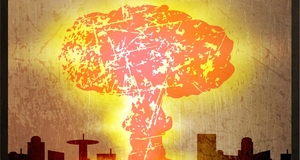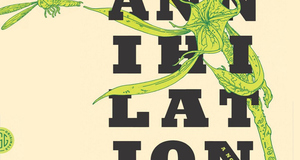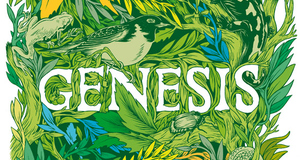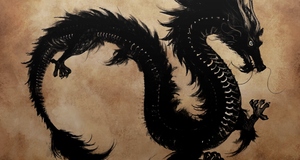From Discussions VOL. 11 NO. 1The Arcane and The Rational: Lovecraft's Development of a Unique MythosIt is this denial of religion for the cold logic of science that separates Lovecraft’s fiction from the earlier representations of the Chain of Being. Lovecraft was an unrepentant atheist. He was a disciple of science, with a special love for astronomy and chemistry. As Joshi observed, “The entirety of Lovecraft’s philosophical (and perhaps even literary) career can be seen as a gradual weaning away from the dogmatism, positivism, and optimism of the late nineteenth-century science, art, and culture to the indeterminacies of relativity and modernism” (Joshi, 1997, p. 5). In other words, Lovecraft was a man of the 20th century. His writing style and political views were anachronistic and Edwardian, but his scientific and religious bent clearly leaned towards the darker and more pragmatic realism of the day. This realism and denial of religiosity was reflected in the mythology Lovecraft created. In his decidedly areligious mythology, Midgard is a thin precipice, a tiny island of humanity occupied by chance. Instead of being the center of the universe and the beloved of a benevolent God, we are here solely at the whim of the ‘others’ – monstrous creatures to whom we are inconsequential. To these creatures, we are, at best, ants scurrying about, and, at worst, a food source. On the other side of this equation, for us there is no reward for good behavior. The closest we come to Paradise in Lovecraft’s vision is through his Dunsanian-like Dreamlands from earlier in his writing career, which he abandoned as pretentious later in life as he developed his Cthulhu mythos. Further support for the idea of an underworld or underwater world where the horrors of the cosmos lurk hungrily can be found in the sea-related stories of the Cthulhu mythos, specifically, “The Call of Cthulhu.” The most wellknown example of Lovecraft’s unique mythology, this story was built gradually throughout his writing career. There are images of it in the earlier story, “Dagon,” and there are echoes of both stories in “The Shadow Over Innsmouth.” “Dagon,” while preceding the accepted beginning of the Cthulhu mythos era of Lovecraft’s writing, was the genesis for the mythology he would later be credited with creating. Though written at the onset of his career, it has been observed that: “Dagon” plants the seeds for not only the nature of his mythos creatures, modes of narration as in the epic journeys and telling pre-history via archaeological remains, “Dagon” even hints at the cosmic view which underlines the later developments in the mythos and which has been averred to be the true nature of the nebulous link between what are known as the mythos stories” (St. Pierre, 2004, p. 17). “Dagon” was, in other words, the seed that grew into “The Call of Cthulhu.” “The Call of Cthulhu” represented a seismic shift in Lovecraft’s writing and the mythology previously discussed here. As Joshi observed in his lecture Poe, Lovecraft, and the Revolution in Weird Fiction, “The Call of Cthulhu” changes everything because it introduces to Lovecraft’s work a “… coherent and plausible use of the theme that would come to dominate his subsequent tales: alien races dwelling on the underside of the known world (Joshi, 2012). In “The Call of Cthulhu,” Lovecraft uses the ocean and its black, unfathomable depths as a stand-in for the tombs, catacombs, and underground hells in which we find his loathsome alien creatures. “The Call of Cthulhu” is a study in perfection in terms of Lovecraft’s mythology. The story builds slowly and the mysterious evil of the sea stands as a surrogate to the cold expanse of outer space. Cthulhu is a being that came to Earth before history and that still lives, sleeping beneath the waves. As he occasionally turns, coming close to wakefulness, his dreams cause madness and terror around the world. The narrator, Francis Waylon Thurston, recounts the story of having become the executor of his late great-uncle, Professor George Gammell Angell of Brown University. It is in the late professor’s papers that the narrator discovers and resumes a quest begun by his great uncle. The story builds with a methodical pace and we learn that Cthulhu – Lovecraft’s greatest creation – is an alien worshipped by voodoo tribes in the steamy swamps of Lousiana, and by degenerate Esquimaux tribes in the Arctic north. Thurston eventually learns of a harrowing, terrifying encounter between the creature and a crew on a merchant ship. This story contains many of the elements for which Lovecraft is well known: the Necronomicon, the mad Arab, Abdul Alhazrad, and Cthulhu himself, a creature that embodies all that Lovecraft hated about the ocean. Lovecraft’s hatred for the sea was well known. He hated seafood in all of its forms, and that hatred extended to its source. De Camp (1975) observed that Lovecraft “often used the sea, along with the cold, wet, and darkness as a symbol of evil in his stories” (p. 78). Indeed, Lovecraft himself once said to Donald Wandrei, “I have hated fish and feared the sea and everything connected to it since I was two years old” (p. 78). It is this hatred that makes the searelated Cthulhu mythos stories so wondrously chilling. “The Shadow Over Innsmouth,” while less a Cthulhu mythos story than others mentioned, still manages to capture the horrifying, alien quality of Lovecraft’s demons. The demons of his mythology, as opposed to the fallen angels of classical literature, are outside of human understanding and definition. The croaking, bleating Cthulhu, or Dagonspawned monsters of this and Lovecraft’s other sea stories, only further reinforce this mythology. We now have the yawning chasm of an uncaring cosmos above us, and the dark depths of earth below us. Add to that the forbidden, cold waves of monster-filled oceans that surround us, and Lovecraft has effectively bound us on all sides by evil and horror. Midgard, classically a place of light and human residence, is suddenly a sliver in an indifferent universe. In almost all of Lovecraft’s stories, the narrator or protagonist is a scholar, someone of high education, good social breeding and standing, and possessor of a healthy skepticism. In other words, the characters are, in many cases, reflections of Lovecraft himself. His rationalism and disdain for religion in all its forms built upon established classical mythology and resulted in something new and revolutionary. The reflectiveness of his narrators only scratches the surface. Lovecraft’s mythology is also a reflection of his own worldview, his own feelings of alienation. It is a profound recognition of the changing face of horror literature in the early part of the 20th century. As Joshi remarked, “The previous century’s stories of the ghost, the vampire, the werewolf, the sorcerer, the haunted house, an so on… had simply become too implausible in the wake of advancing human knowledge” (Joshi , 2012, p. 103). At the time when weird fiction was growing and becoming a literary sub-genre on its own, Lovecraft was redefining both it and what had come before. While he may not have meant to do so, he established a new way of looking at science fiction and horror. He may have been simply looking to tell a good story, but his encyclopedic knowledge of classic and contemporary literature was such that he developed a new view of our place in the universe. As Lovecraft himself said in Supernatural Horror in Literature (2012), “The one test of the really weird [story] is simply this – whether or not there be excited in the reader a profound sense of dread, and of contact with unknown spheres and powers; a subtle attitude of awed listening, as if for the beating of black wings or the scratching of outside shapes and entities on the known universe’s utmost rim.” AuthorDale Allen Crowley graduated summa cum laude from Baldwin-Wallace University with his Bachelor of Arts in English in December of 2014. He is a member of the Sigma Tau Delta English Honor Society and plans to pursue a Master of Arts in English Literature in the fall of 2015. His planned area of study focuses on American and British horror, science fiction, and fantasy literature. He has published two novels- “North Coast Gothic: A Grim Fairy Tale” and “A Darkness Within” - as well as several short stories and poetry in both print and online magazines. ReferencesDe Camp, L. S. (1975). Lovecraft: A Biography. New York: Ballantine Books. Frye, N. (2009). New Directions From Old. Ottawa: University of Ottawa Press. Joshi, S. T. (1990). H.P. Lovecraft: The Decline of the West. Berkley Heights, NJ: Wildside Press. Joshi, S. T, (1997). More Annotated H.P. Lovecraft. New York: Dell. Joshi, S. T. (2012). Poe, Lovecraft, and the Revolution in Weird Fiction. Ninth Annual Commemoration Program of the Poe Society. Enoch Pratt Free Library, Baltimore MD. Joshi, S. T. (2012). Nightmares Countries: H.P. Lovecraft – The Master of Cosmic Horror. New York: Metro Books. Leane, E. (July 2005). Locating the Thing: The Antarctic as Alien Space in John W. Campbell’s “Who Goes There”. Science Fiction Studies, Vol. 32, No. 2. 225-239. Lovecraft, H. P. (2010). The Best of H.P. Lovecraft. London: Carlton Books. Lovecraft, H. P. (25 September 2013). Supernatural Horror in Literature. The H.P. Lovecraft Archive. (http:// http://www.hplovecraft.com). St. Pierre, R. (2004). Never Fully Realized: Birth of a Mythos. H.P. Lovecraft’s “Dagon”. Shoin Literary Review, No. 37, 15-36. Suggested Reading from Inquiries Journal
Inquiries Journal provides undergraduate and graduate students around the world a platform for the wide dissemination of academic work over a range of core disciplines. Representing the work of students from hundreds of institutions around the globe, Inquiries Journal's large database of academic articles is completely free. Learn more | Blog | Submit Latest in Literature |



















